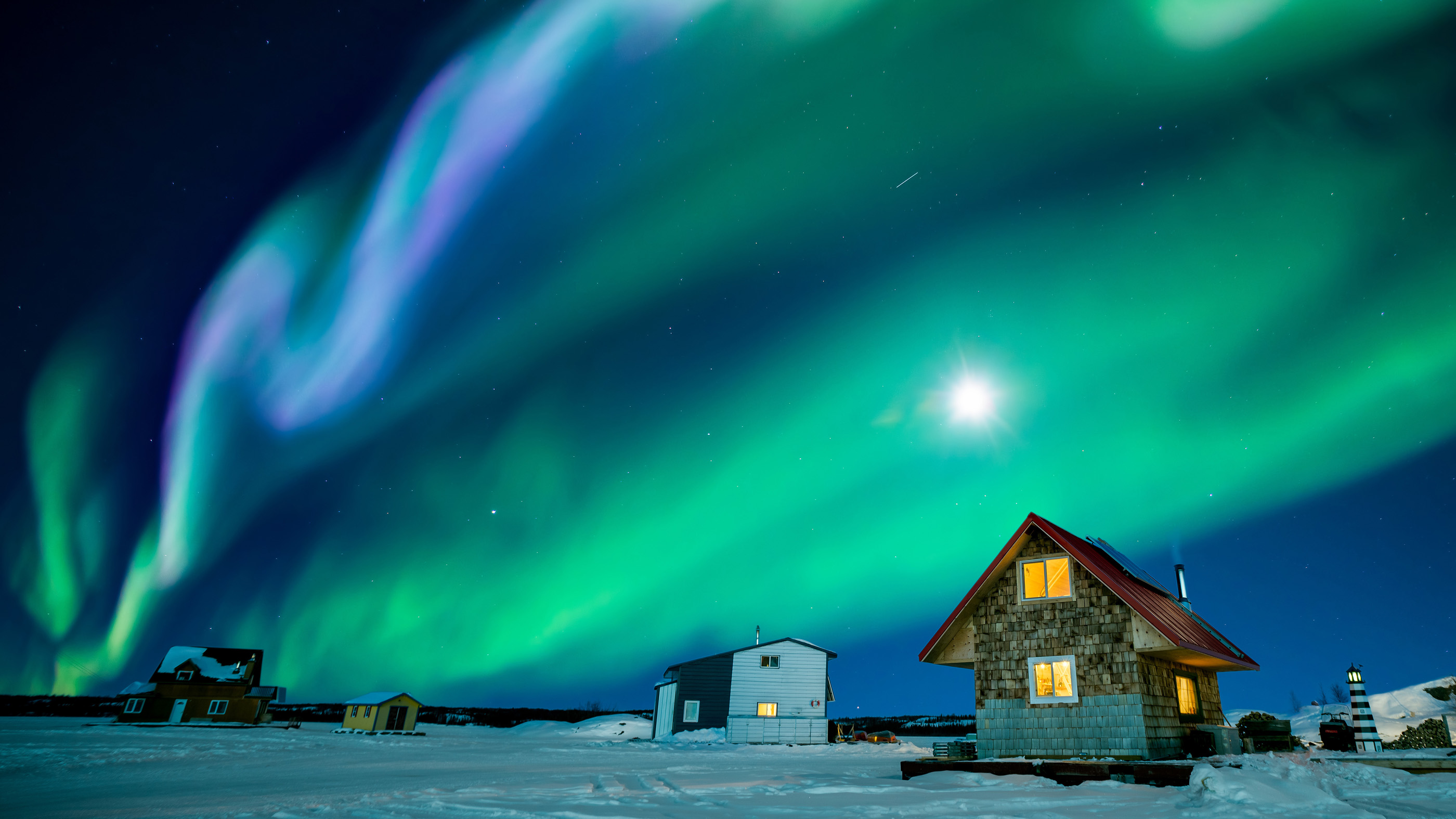How to watch the northern lights across far northern US tonight

A small northern slice of the United States could get a rare glimpse of the northern lights on Thursday (Dec. 10) night.
A geomagnetic storm may cause the lights, or aurora borealis, to dip more southward than usual, according to Space Weather Watch. Earlier this week, there was hope that the northern lights might dip well into the United States, with aurora visible as far south as New England and Chicago, but now it appears that the best views will be within Canada and perhaps around the U.S-Canada border.
The aurora borealis (and their cousins in the Southern Hemisphere, the aurora australis) are caused by the solar wind, a stream of charged particles that emanates from the sun and interacts with Earth's upper atmosphere.These charged particles excite oxygen and nitrogen molecules in the atmosphere. As the molecules return to their regular state, they emit particles of light called photons. These photons create the ghostly, dancing colors that make up the aurora.
Related: Aurora photos: Northern lights dazzle in night-sky images
Typically, the lights appear only near the poles. But when the geomagnetic disturbance to the atmosphere is particularly strong, they can appear at lower latitudes. The National Oceanic and Atmospheric Administration (NOAA) maintains a 30- to 90-minute forecast of the aurora, providing the most up-to-date predictions of who might be able to view the phenomenon.
Modeling had suggested a possible view of the aurora across North America on Wednesday (Dec. 9), but solar wind quickly trailed off, leading to limited views, according to Space Weather Watch. The sun did release a burst of energy, called a coronal mass ejection, but the bulk of the particles released zipped by Earth instead of hitting the atmosphere directly. This led to a downgrading of the forecast.
Solar storms don't only cause the northern lights. They can also interfere with satellite communications. The sun's activity fluctuates in predictable 11-year cycles; solar cycle 25 began in January 2020, Live Science previously reported. It's expected to be a relatively quiet 11 years, with a peak of sunspot activity expected in summer 2025.
Sign up for the Live Science daily newsletter now
Get the world’s most fascinating discoveries delivered straight to your inbox.
Originally published on Live Science.

Stephanie Pappas is a contributing writer for Live Science, covering topics ranging from geoscience to archaeology to the human brain and behavior. She was previously a senior writer for Live Science but is now a freelancer based in Denver, Colorado, and regularly contributes to Scientific American and The Monitor, the monthly magazine of the American Psychological Association. Stephanie received a bachelor's degree in psychology from the University of South Carolina and a graduate certificate in science communication from the University of California, Santa Cruz.









